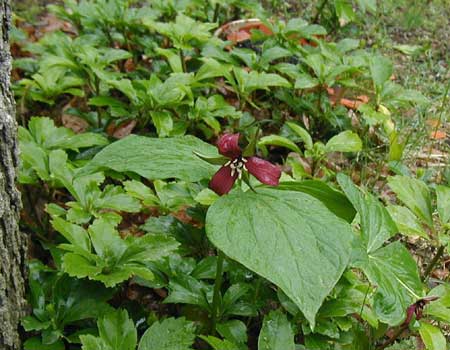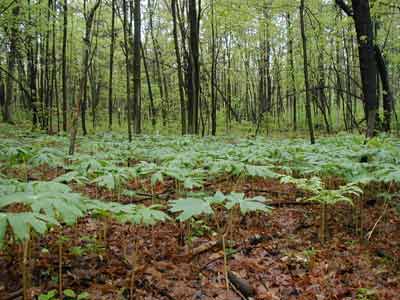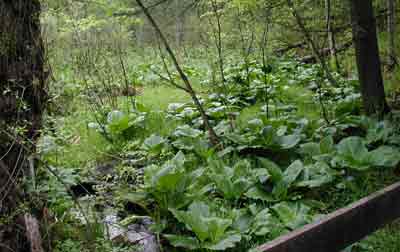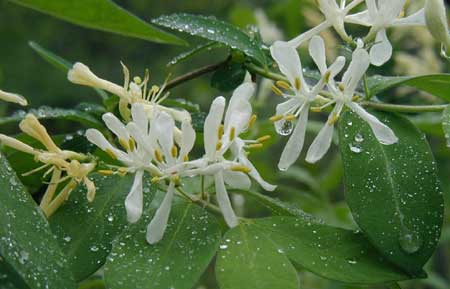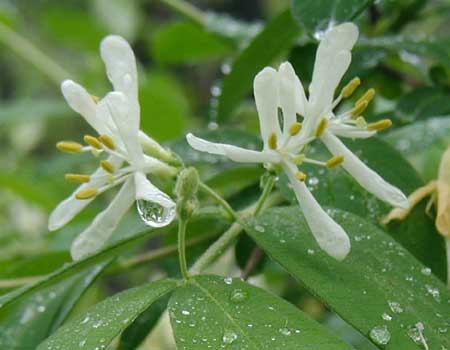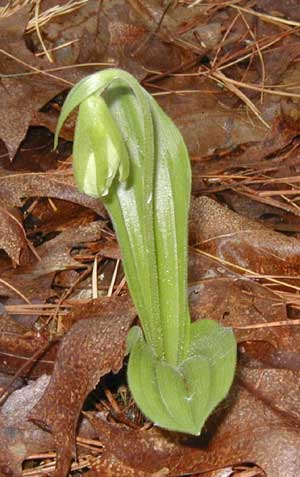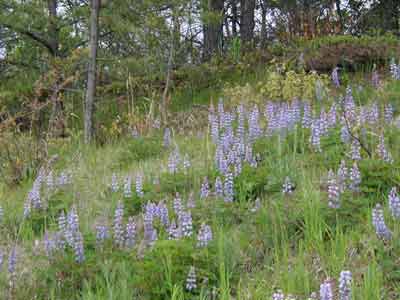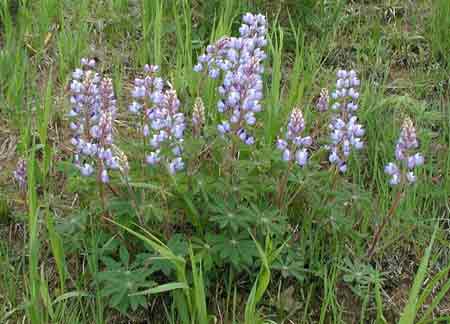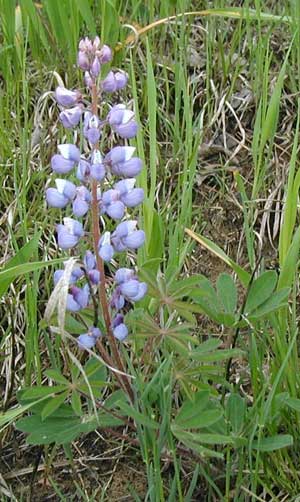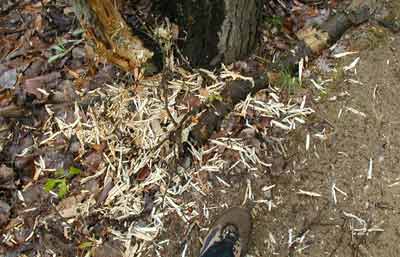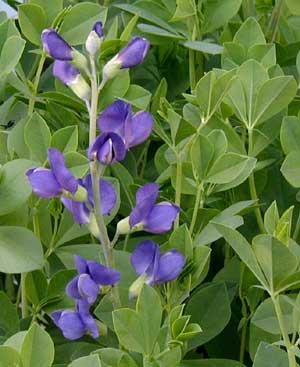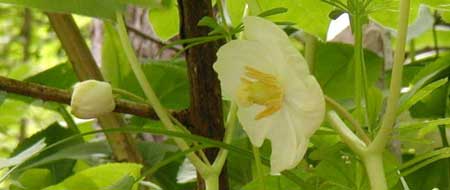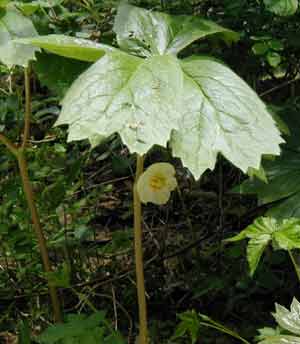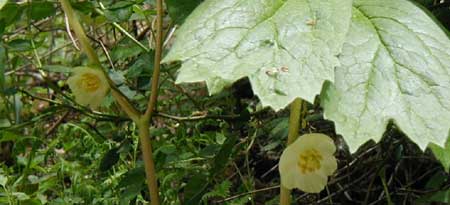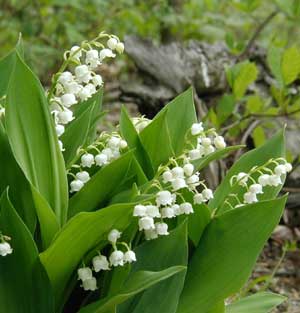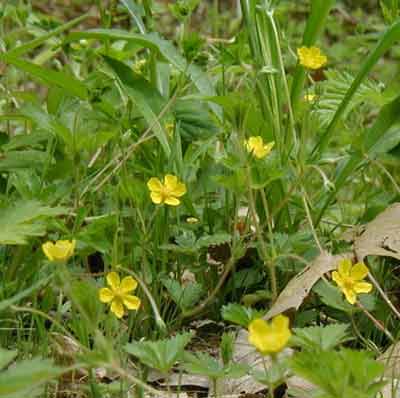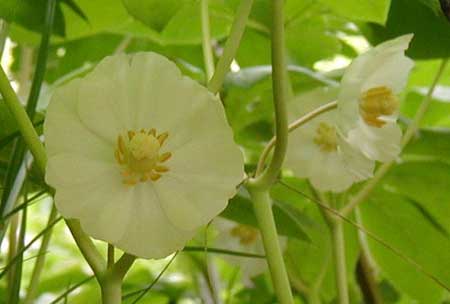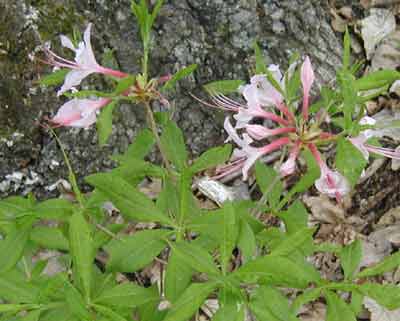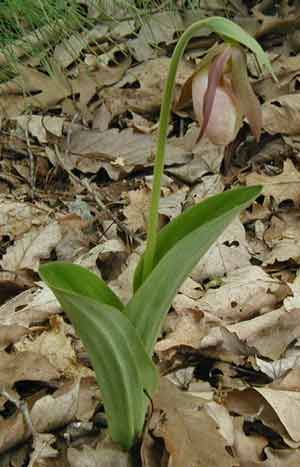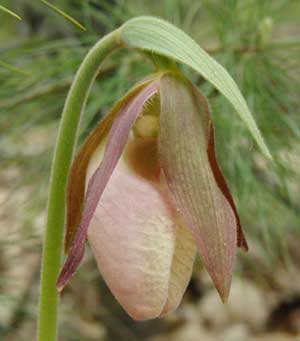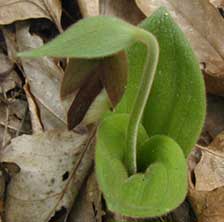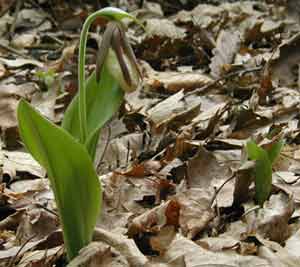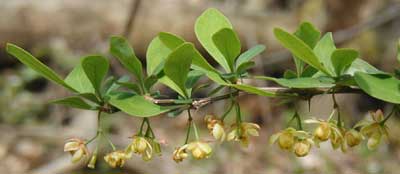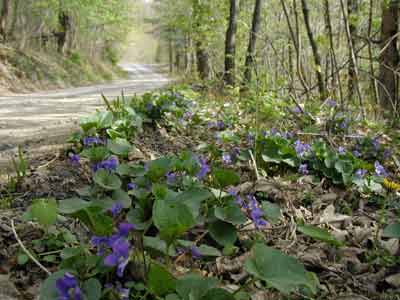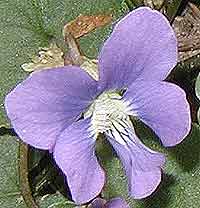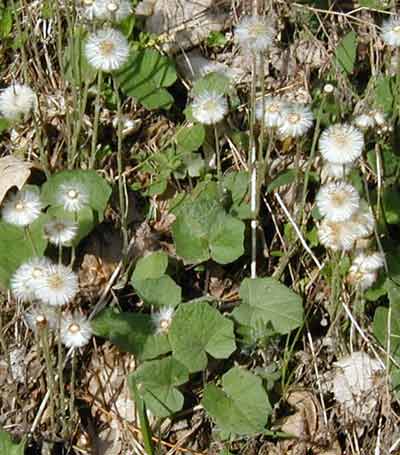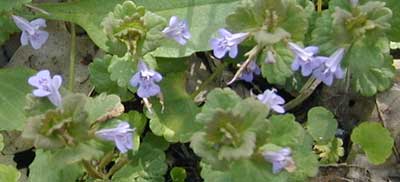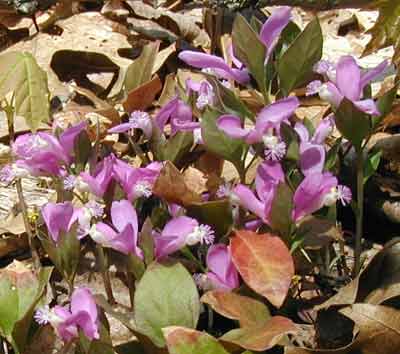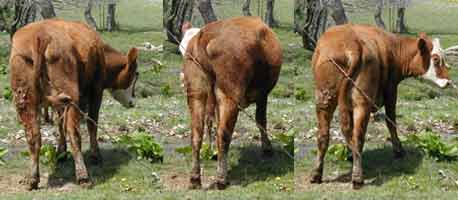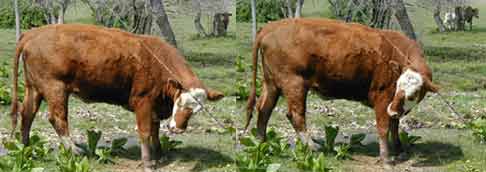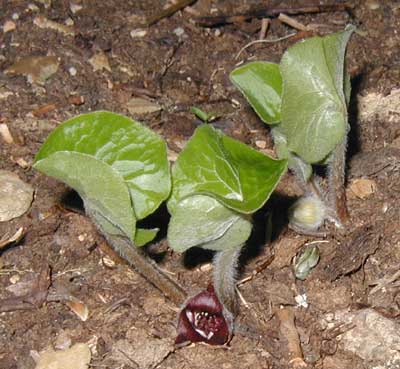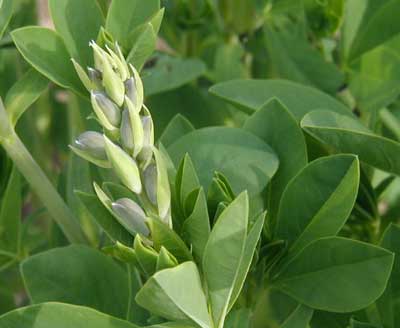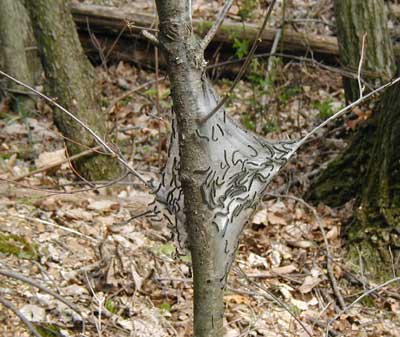This time of year the mint has filled an entire wall of the stone house, the returning lavender is getting ready to open its purple blooms, and the oregano has greened up nicely. The lettuce is just coming up in the garden, while the lilies are sending out their flower heads. The pink oxalis, which is a transplant from North Carolina, is blooming and so is our locally found yellow oxalis. In sunny places in the yard the sheep sorrel is blooming, too.
In the woods near trails or somewhat open areas where light is getting to the forest floor, Smooth Soloman’s Seal and False Soloman’s Seal are in bloom. Both Soloman Seals have a single arching stem with large, parallel-veined, stalkless leaves. These members of the Lily family differ in the placement and shape of their blooms.
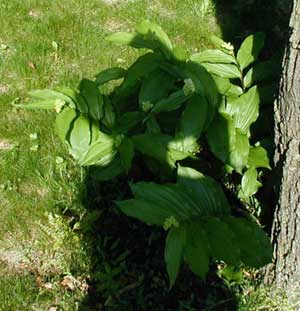
False Soloman’s Seal volunteered next to this oak tree in the backyard.
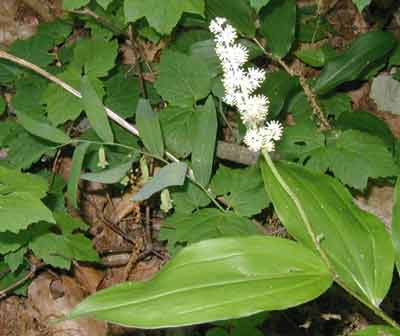
False Soloman’s Seal is in the foreground here and the smaller Smooth Soloman’s Seal is in the background.
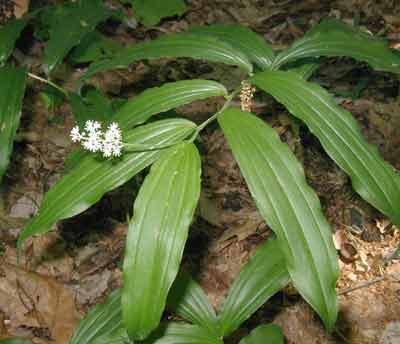
False Soloman’s Seal with its cluster of flowers at the end of the stem.
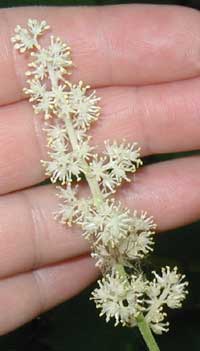
False Soloman’s Seal creamy white cluster of flowers.
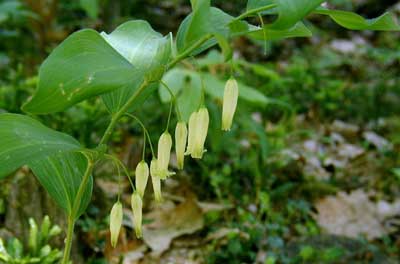
Smooth Soloman’s Seal with its dangling blooms.
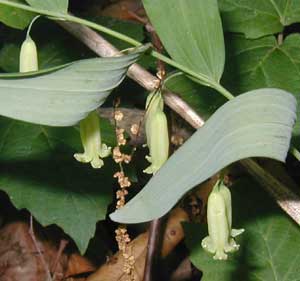
Hanging blossoms of Smooth Soloman’s Seal.
This week we’ve seen the Swallowtail Butterflies flitting about the place. They seem to like hanging around the higher tree branches.

Swallowtail butterfly resting on a sassafras leaf.
The woodland herbs are growing up and this week I spotted goldenseal, rattlesnake plantain and wild yam greenery, although it is too early now for their flowers. The pink lady slipper blossoms developed into a bright pink and now the blossoms are starting to dry up as noted by the brownish tinge at the bottom of the blossoms.
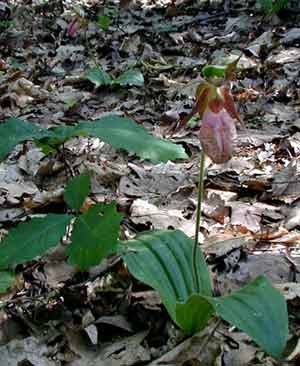
Two pink lady slippers blooming brightly.
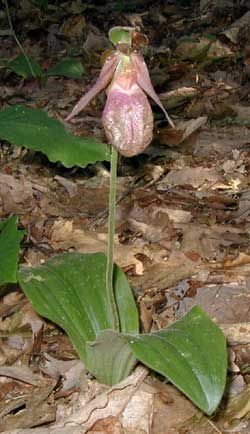
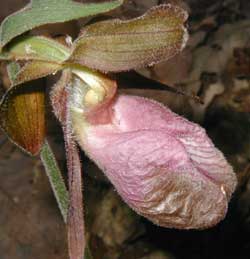
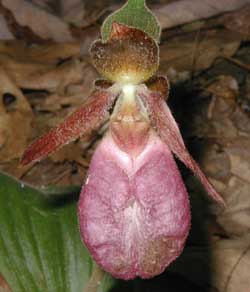
A waning pink lady slipper as noted by the tinge of brown on the blossom.
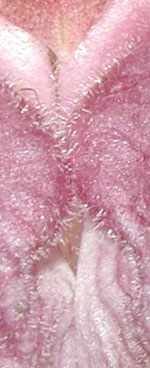
Fuzzy pink lady slipper.
In some places the Maple-Leaved Viburnum is in bloom and in other places the blooms are just about ready to open. The flat cluster of blooms appears at the top of the stem above a pair of leaves that remind one of maple leaves for which it is named. The flowers vary from white to light pink and will develop into black berries that sometimes last through the winter. The maple-leaved viburnum seems to be a rather opportunistic plant in that it comes back rather quickly after cutting it back, probably by underground runners. The viburnum will bloom when the plant is only a foot tall or when it is four feet tall.
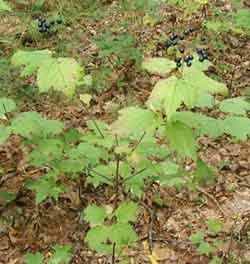
Maple-leaved viburnum ready to open its light pink flowers.
The Deerberry shrubs are showing their white, down-turned blossoms with protruding stamens, which may remind one of blueberries or huckleberries as the deerberry, Vaccinium stamineum, is a member of the Heath family. The small oval-shaped leaves are pale underneath.
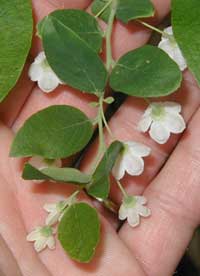
Deerberry blossoms hanging from the leaf axils.
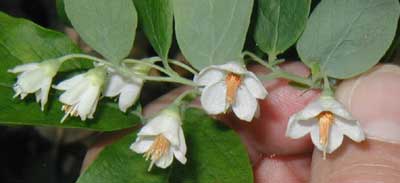
Deerberry blossoms with their protruding stamens.
Brambles and raspberries are blooming profusely this week everywhere in the woods and especially along the lane or opened areas in the woods. The brambles have a way of opening the lowest blossoms in the group first, followed by others on up the stem.
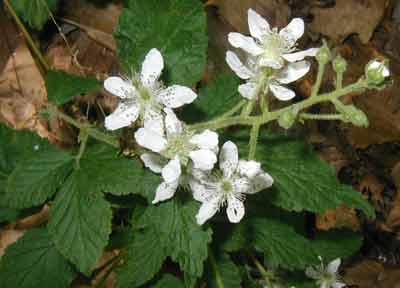
Brambles opening up their crinkley blossoms.
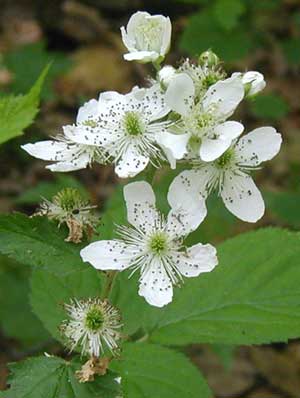
Brambles blooming in the woodlands.
The Partridgeberry is developing its twin flowers which are in bud.
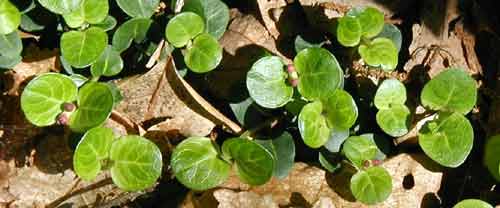
Partridgeberry twin flowers are in bud now.
I’ll look forward to the partridgeberry blooms opening as their delicate scent is terrific!
